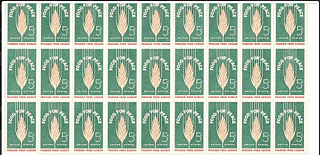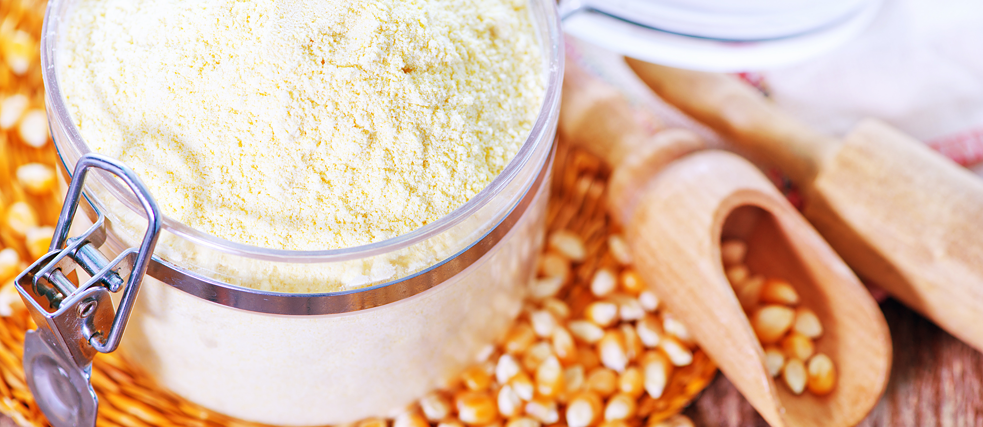At a certain moment in time - from the late 50s into the 80s - it was indeed the Americans that would give Tunisian kids bread for breakfast.The food aid policy - known as PL-480 and ‘Food for Peace’ - was framed as humanitarian but it was implemented with returns in mind. A story of destruction of traditional food culture.
Just down the road from where Taoufik Khedri now sells baguettes in Jbel Lahmar is the home of a lady who used to serve him baguettes for breakfast at his school canteen. A memory.“Fatma, bless her soul, she would come in the morning at nine and bring the bread, the butter and everything. With chocolate, and chocolate milk, it was tayara, mish normale (amazing),” the 62 year old remembered, sitting down in his bakery having turned off the ovens.
They ate “petit pain,” he said, correcting me when I referred to the bread as “baguette”. I think it was basically a baguette, though. “You take this, cut it and make it into a petit pain, like a sandwich,” he explained, using the baguette on the shelf behind him to make his point. “They put butter on it, and cheese. It was the Americans that would bring it.”
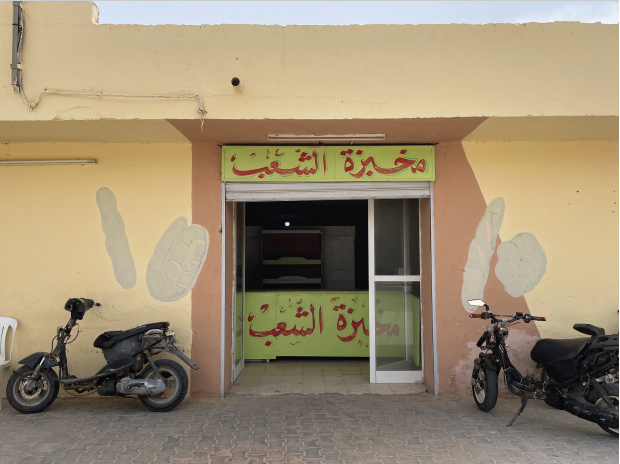 THE PEOPLE'S BAKERY: A BAKERY SELLING SUBSIDIZED BREAD IN THE SOUTHERN REGION OF KEBILI
| ©Layli Foroudi
At a certain moment in time - from the late 50s into the 80s - it was indeed the Americans that would give Tunisian kids bread for breakfast. Initially, this initiative was due to a domestic wheat surplus: farmers in the US were producing a lot of wheat as the sector industrialized and the state was maintaining prices by purchasing and storing surpluses. Having all this stock would cause downward price pressure and some politicians had bigger ideas for the grain. This wasn’t subtle, with US politicians saying things like: “With proper use these surpluses can be made a far more potential means of combating the spread of communism than the hydrogen bomb.”
THE PEOPLE'S BAKERY: A BAKERY SELLING SUBSIDIZED BREAD IN THE SOUTHERN REGION OF KEBILI
| ©Layli Foroudi
At a certain moment in time - from the late 50s into the 80s - it was indeed the Americans that would give Tunisian kids bread for breakfast. Initially, this initiative was due to a domestic wheat surplus: farmers in the US were producing a lot of wheat as the sector industrialized and the state was maintaining prices by purchasing and storing surpluses. Having all this stock would cause downward price pressure and some politicians had bigger ideas for the grain. This wasn’t subtle, with US politicians saying things like: “With proper use these surpluses can be made a far more potential means of combating the spread of communism than the hydrogen bomb.”The food aid policy - known as PL-480 and ‘Food for Peace’ - was framed as humanitarian but it was implemented with returns in mind, as noted in a government document on the program: “the children who develop a liking for bread, milk, cornmeal, and other U.S. foods may be commercial customers tomorrow.”
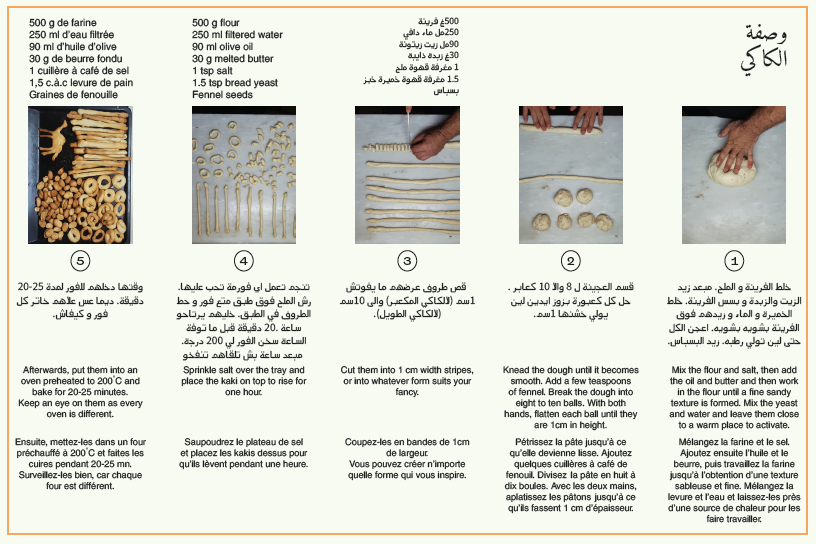 Recipe for Tunisian Kaki | ©Broudou Magazine
Recipe for Tunisian Kaki | ©Broudou Magazine
In Douz, a town in Tunisia’s south, all school children were given bread but the accompaniment depended on which family you were from. “There are two types,” said Mohamed Fekih Chedly, a 64 year old carpenter, from his workshop on the high street. “The middle class students would be given bread with oil and sometimes cheese and they would have tables for them. And the rest of us would be offered a quarter of a khobza and sometimes milk, and be asked to go away.”
It is improbable that the PL-480 policy instructed Tunisian schools to discriminate between pupils, but the wheat supplies to Tunisia were a way of maintaining the medium to large land-owning class in place, while also staving off social discontent. In the period after independence from France, there was a political choice of the Tunisian government to leave the large farms alone - some of them over 10,000 hectares and still French owned - instead of redistributing land, explains Ajl. In the year 1960, for example, he notes, Tunisia received 72,000 tons of wheat as part of PL-480.
The US’ Food for Peace program was always planned as temporary, targeted. It staved off revolution yet now its absence is felt as further privation.
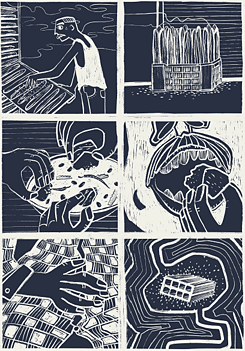 © Zeineb Ben Haouala
“The Tunisian government has to make a fundamental choice. Ok we don’t want to re-distribute the land to deal with the hungry people,” said Ajl. “What do you do? You can’t just let these people go hungry because hungry people have a propensity to disrupt the social structure, they [the Tunisian government] were very worried about revolution.”
© Zeineb Ben Haouala
“The Tunisian government has to make a fundamental choice. Ok we don’t want to re-distribute the land to deal with the hungry people,” said Ajl. “What do you do? You can’t just let these people go hungry because hungry people have a propensity to disrupt the social structure, they [the Tunisian government] were very worried about revolution.”Khedri’s father migrated to Tunis from Matmata in the south of the country at age 18 during the 50s looking for work. He found it in bread and then returned to his hometown to get married. His wife, who came back with him to Tunis, carried on making traditional bread at home while he set up his bakery selling baguettes to the flux of workers moving to the city, and needing quick meals.
As a child at home, Khedri would eat his mother’s traditional tabouna, made with semolina flour, which he preferred to the white flour petit pain. “The bread at home was better, my mum would make it with oil and she would put eggs in it, and it is with semolina. It’s not the same, its quality plus,” he said. Then he claps his hand: “No more! Bye bye. The times have changed. In 15 minutes, you can make 300 baguettes! It is a huge difference.”
A five-minute drive from Khedri’s bakery, Halima, 57, still makes tabouna in her home and sells it for a living. She knows the tabouna is better than the white bread. No one would waste this like they do with the baguette, she points out. But still, when she thinks back to the petit pain at school her eyes light up. “It’s with flour but I ate it and it was tasty, tasty bread and hot milk!”
There is no more petit pain in schools. The US’ Food for Peace program was always planned as temporary, targeted. It staved off revolution yet now its absence is felt as further privation. “Now they give them neither milk nor bread at school, nothing,” says Halima. “They don’t even offer them water.”
This article was first published in Broudou Magazine.
November 2023
